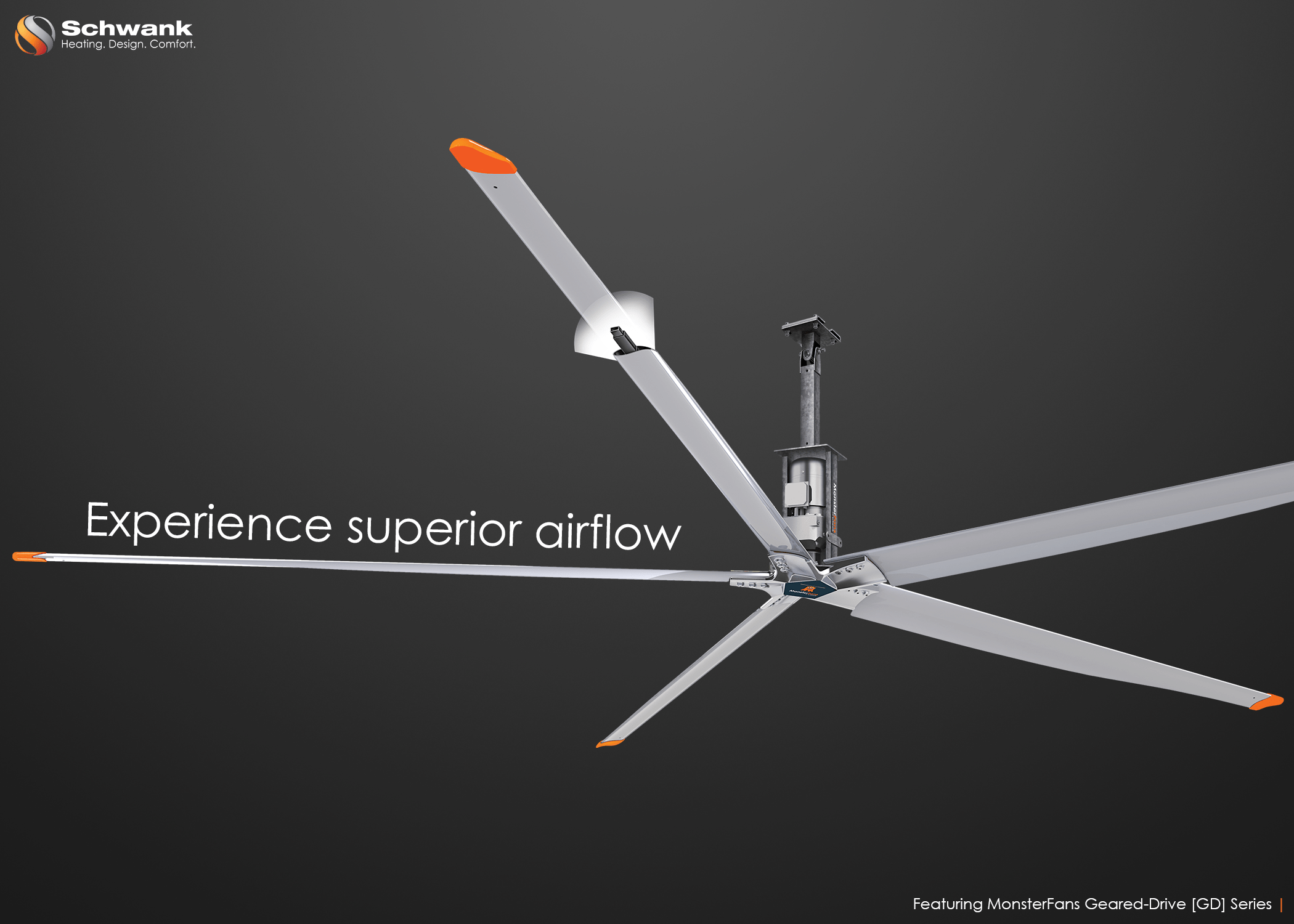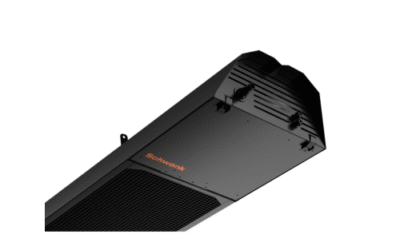Les ventilateurs à haut volume et à faible vitesse (HVLS) sont souvent considérés comme meilleurs que les petits ventilateurs.
Découvrez toutes les raisons
1. Zone de couverture : Les ventilateurs HVLS ont un grand diamètre (généralement de 12 à 24 pieds), ce qui leur permet de couvrir une surface beaucoup plus grande que les petits ventilateurs. Ils sont donc plus efficaces pour la déstratification et le refroidissement de grands espaces tels que les centres de distribution, les entrepôts, les usines, les bâtiments aéroportuaires et les bâtiments agricoles.
2. Efficacité du flux d'air : Les ventilateurs HVLS déplacent un volume d'air important à faible vitesse, ce qui crée une brise légère sur une large zone sans provoquer de courants d'air désagréables. En revanche, les petits ventilateurs doivent parfois fonctionner à des vitesses plus élevées pour obtenir un débit d'air similaire, ce qui peut être bruyant et inconfortable.
3. Efficacité énergétique : Malgré leur grande taille, les ventilateurs HVLS sont conçus pour fonctionner à faible vitesse, consommant moins d'énergie que plusieurs petits ventilateurs nécessaires pour couvrir la même zone. Cela peut se traduire par des économies d'énergie substantielles au fil du temps.
4. Confort et avantages pour la santé : Les ventilateurs HVLS créent un environnement plus confortable en distribuant uniformément l'air dans l'espace, en réduisant les points chauds et en améliorant la circulation de l'air. Cela permet d'atténuer le stress thermique, d'améliorer la qualité de l'air et d'accroître le confort général des occupants.
5. Peu d'entretien : Les ventilateurs HVLS nécessitent généralement moins d'entretien que plusieurs petits ventilateurs. Avec moins de pièces mobiles et des conceptions plus simples, les ventilateurs HVLS ont souvent une durée de vie plus longue et des coûts de maintenance plus faibles.
6. Contrôlabilité : Les ventilateurs HVLS, tels que les MonsterFans de Schwank, peuvent être activés en fonction des différences de température entre le plafond et le sol, généralement lorsque la différence dépasse 35° F (ou 2° C). De toute évidence, il est moins fastidieux d'attacher seulement quelques ventilateurs HVLS aux capteurs et aux contrôleurs que d'attacher de nombreux petits ventilateurs à ces systèmes.
Dans l'ensemble, la taille plus importante, le débit d'air efficace, les économies d'énergie et les avantages en termes de confort font des ventilateurs HVLS un choix privilégié pour le refroidissement et la circulation de l'air dans les grands espaces commerciaux et industriels. En règle générale, les petits ventilateurs conviennent à des hauteurs de plafond de 10 à 15 pieds, tandis que les ventilateurs HVLS conviennent à des installations de 5 à 10 mètres.
Pour en savoir plus sur Schwank MonsterFans, visitez notre page pour voir plus de photos et de spécifications techniques.
Vous êtes prêt à démarrer votre prochain projet ? Notre équipe peut vous aider à élaborer un plan d'implantation personnalisé et vous assister dans la spécification de votre projet. Ce service est gratuit et Schwank s'associera à vous pour vous guider tout au long du processus. Découvrez notre assistance à la conception technique <here>



